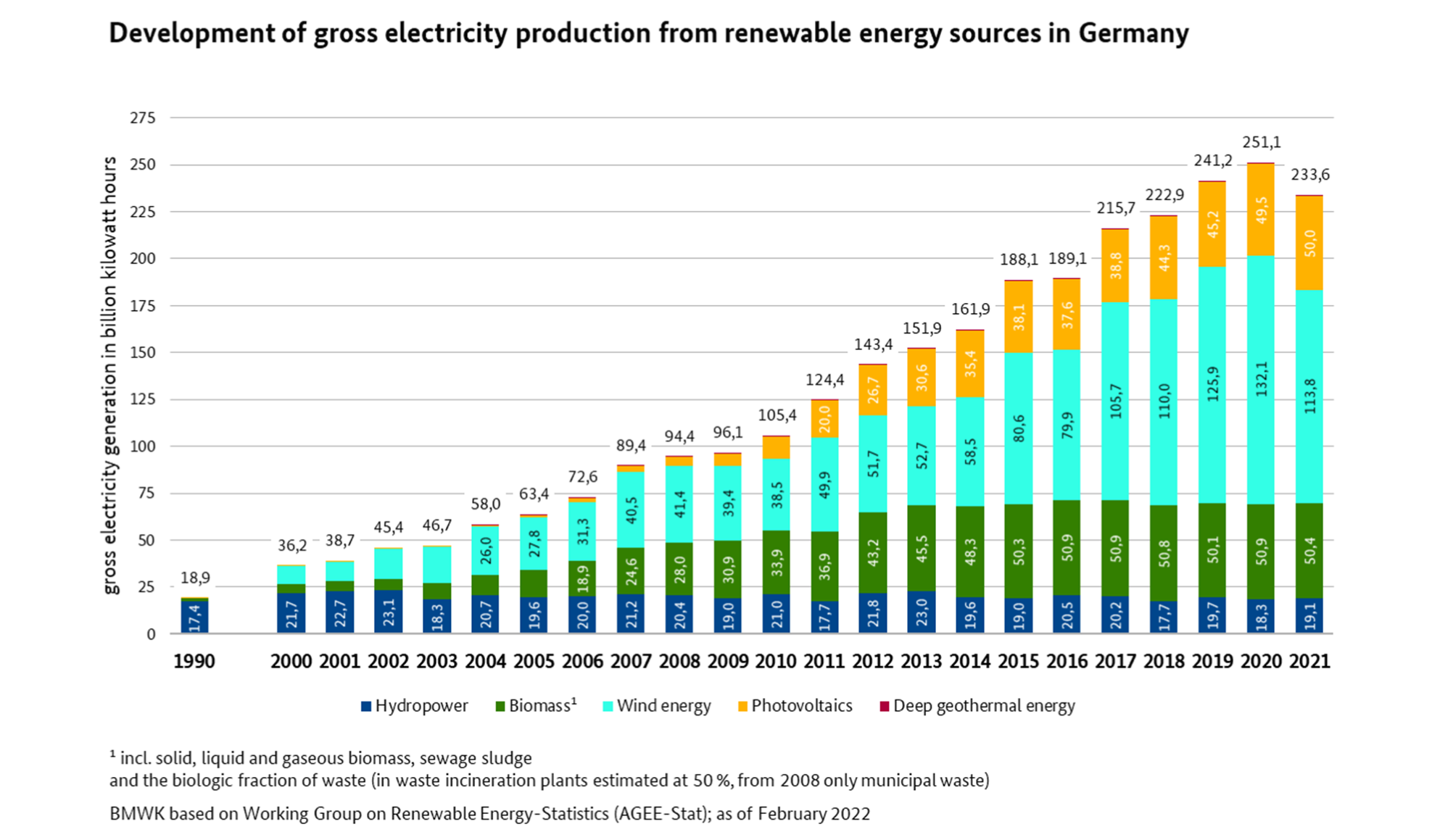Hint: This website is not optimized for your browser version.
Electricity generation
Electricity generation means the conversion of any energy source into electrical energy.
Electricity generation can be divided into two categories by the type of energy source: conventional and renewable generation. Conventional electricity producers are the power plants that up to now have mainly needed finite, fossil fuels. These include oil, coal and gas as well as nuclear power plants. Renewable electricity generation, on the other hand, uses energy sources that are unlimited and continually renew themselves. Unlike oil, coal or gas, renewable energies do not cause any direct CO2 emissions. Wind energy, solar power, biomass and hydro power are examples of renewable energies. There is also geothermal energy.
The actual electricity fed in to the grid by the energy sources with the greatest capacity are shown on the SMARD website. However, other energy sources also supply the electricity grid and are summarised in "Other renewable sources" and "Other conventional sources" on the SMARD Website.
Other renewable energy sources
- geothermal energy
- landfill gas
- sewage treatment plant gas
- pit gas
Other conventional energy sources
- fossil coal-derived gas
- mineral oil
- waste
- oxygen steel furnace gas
- blast furnace gas
- refinery gas
- gas with a high proportion of hydrogen
- other byproducts of production (eg steel and coke production)
- mixture of more than one fuel type
Electricity generation in transition – renewables growing in importance
The proportion of renewable energy in the grid is rising in the course of the energy transition. In 2016, it made up about 30% of the total gross electricity generation and this figure is still rising. The growing significance of renewables in the electricity sector is largely due to the Renewable Energy Sources Act (EEG). Since it was introduced, generation from renewable energy sources has risen from about 6% in 2000, to 31.7% in 2016, according to preliminary figures. By 2025, 40-45% of electricity consumed in Germany is expected to come from renewable energy sources. Wind and solar power are the most important renewable energy sources. Wind energy is the energy source with the greatest installed capacity and highest actual generation.
Users of the SMARD website can look at the current net electricity generation broken down by energy source. Net electricity generation, unlike gross electricity generation, does not include electricity required by power plants themselves. This is the electricity power plants need for their operations, such as air conditioning, lighting or coal mills. Gross figures include this electricity, while net figures do not. Net electricity production is therefore the amount of electricity actually fed into the grid.
The SMARD data shows how the electricity generated by each individual energy source changes throughout the day and over longer periods. Both actual figures and forecasts for generation and consumption are shown on the SMARD website. The data can be found in the Market data visuals section.
Where do these figures come from?
Electricity producers need to know in advance when electricity will be needed from their installations, so electricity suppliers report the demand they expect from their customers. These consumption forecasts allow electricity producers to plan the use of their generating capacity. The electricity producers also produce generation forecasts for their power plants. Although consumption and generation forecasts are always improving, they are still not perfect. The actual figures are not the same as the forecast ones. Forecasting errors may occur because consumers need more electricity than expected, for example, or because the wind is stronger than forecast.
SMARD users may also be interested in how much electricity an individual power plant is currently feeding in to the grid. This information can be found for power plants with an installed generating capacity of over 100 MW in the detailed views of the list of power plants and the power plant map in the Germany in detail section. The SMARD website is continually adding to its data bank. Data on current generation will be available for smaller power plants as well in future.
